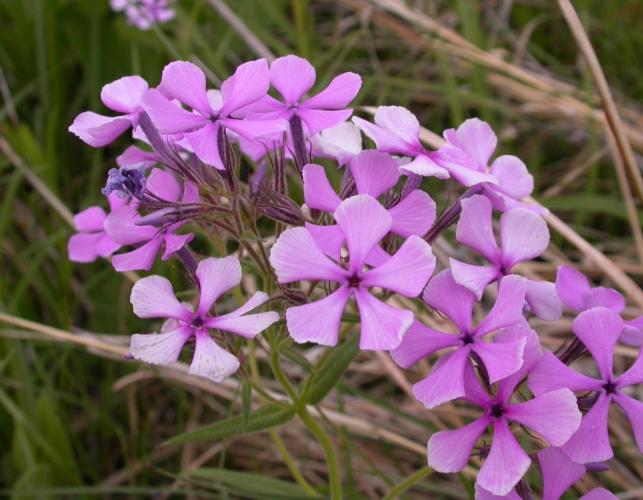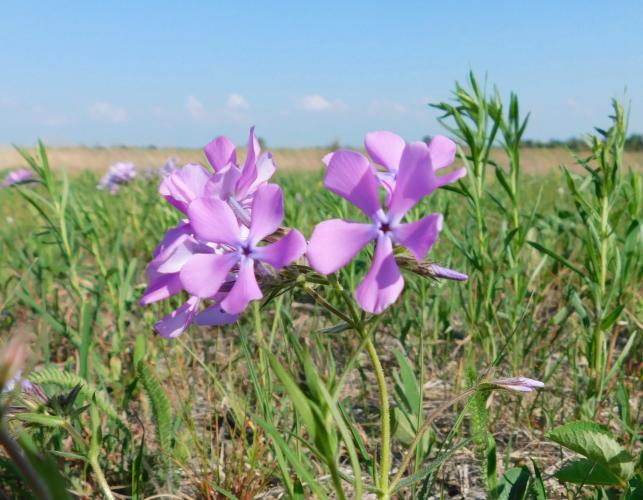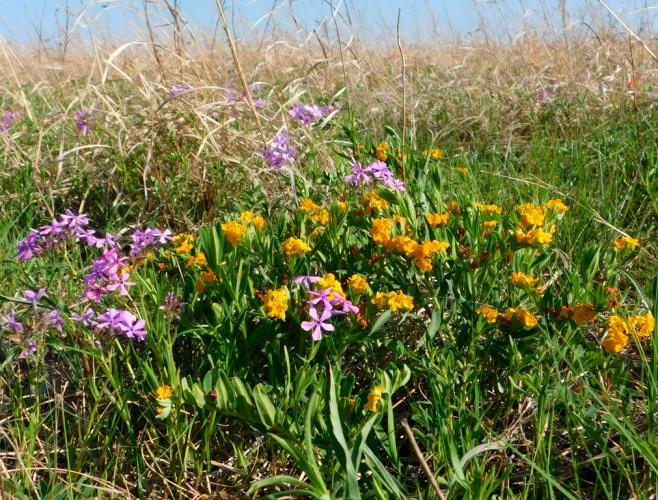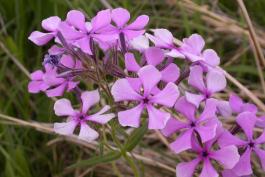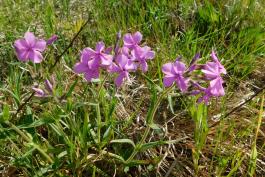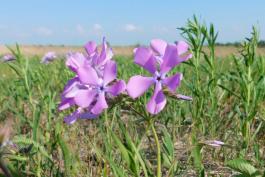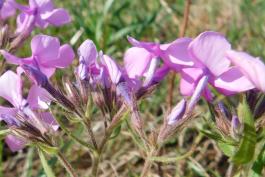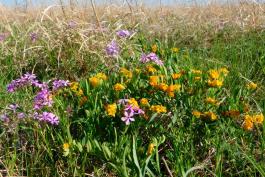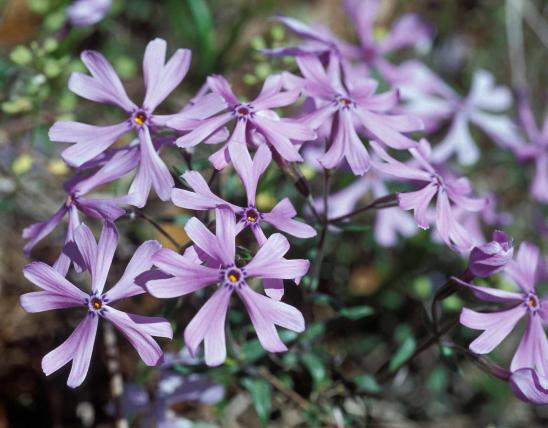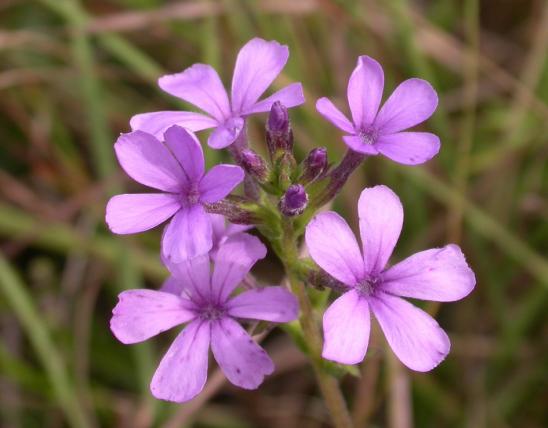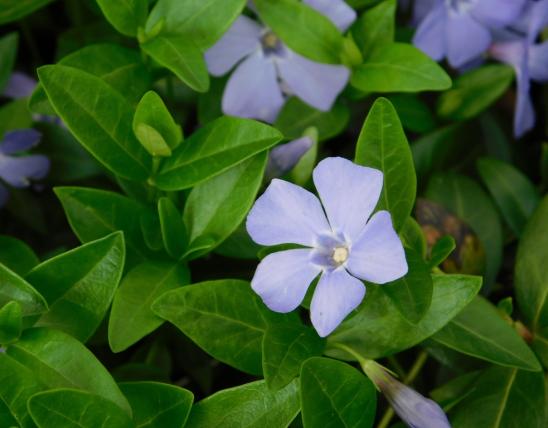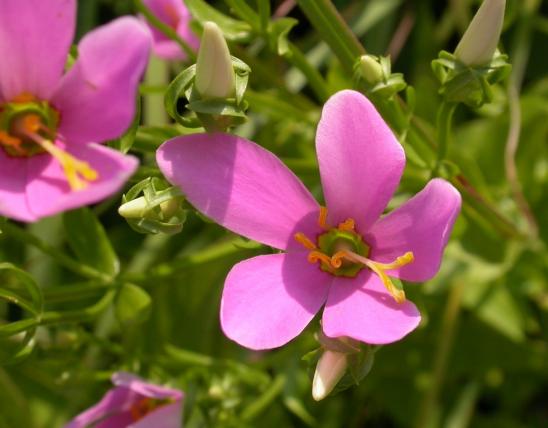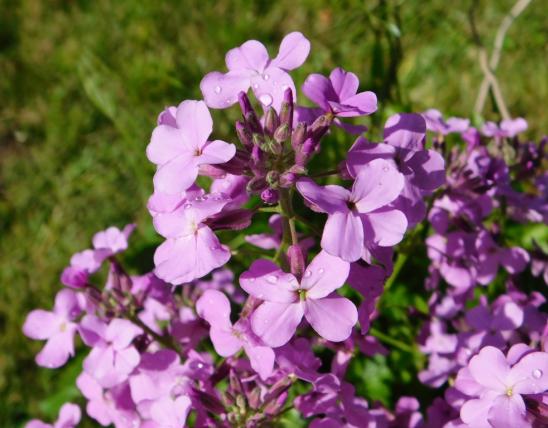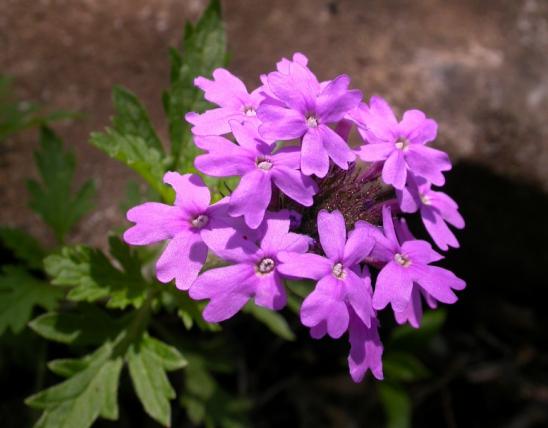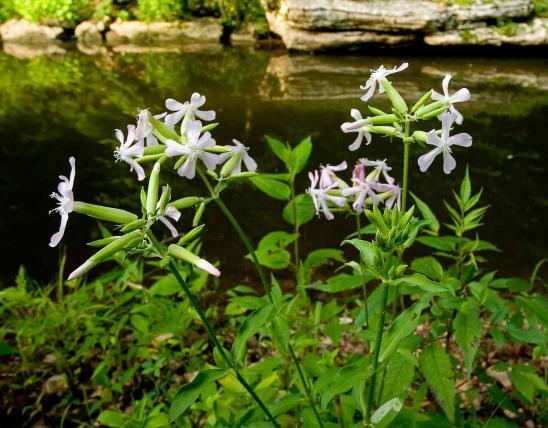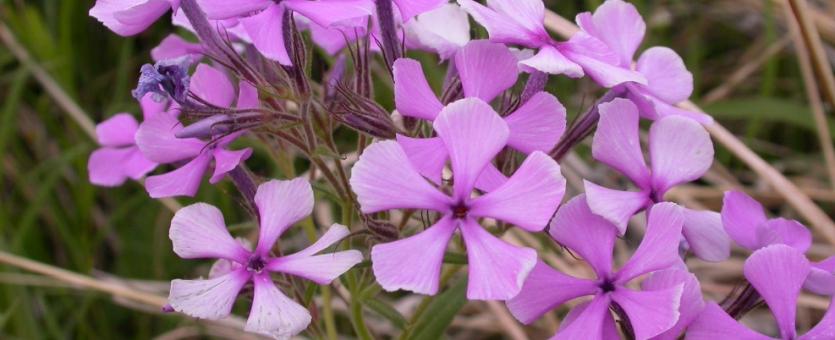
Downy phlox, also called prairie phlox, is a perennial wildflower with lance-shaped leaves and showy, rounded clusters of pink or lavender flowers. It is similar to blue phlox, but it grows more often in prairies and other open, sunny, and drier habitats. As the name implies, the stems typically are covered with small hairs; these may feel sticky to the touch.
The flowers are tubular with 5 lobes, the lobes spreading, widened and rounded at the outer portion, sometimes with a small point at the very tip (they are not notched); the color varies from light pink to bright pink, lavender, or light purple, rarely white. The tubular base of the petals is usually hairy on the outside. Blooms April–June.
The leaves are opposite, linear to lance-shaped, stalkless, to 3 inches long; mostly hairless (except for the margins and along the midrib on the underside); the leaves are spaced well apart on the stem.
A plant may have 1–3 flowering stems, which grow upright; a few additional, shorter nonflowering stems may be present, but they are otherwise similar to the flowering stems (similarly upright/ascending, and with similar leaves).
Similar species: Nine species in genus Phlox are recorded growing wild in Missouri. Downy phlox (P. pilosa, the subject of this page) is one of the most common, especially in dry, sunny habitats.
In our state, blue phlox, or wild sweet William (P. divaricata), is the species most likely to be confused with downy phlox. Its height and overall look are much like that of blue phlox, but here are some key differences:
- Blue phlox, unlike downy phlox, develops vegetative stems (in addition to flowering stems) that look different from the flowering stems: they spread outward, take root at the nodes, and have rounder leaves that persist through winter; meanwhile, downy/prairie phlox only rarely has nonflowering stems, and when it does, the stems are upright, and the leaves are not much different from those of the flowering stems.
- Downy phlox usually has the tubular, basal part of the petals hairy (downy) on the outer surface, while the tube-shaped part of blue phlox lacks hairs on the outer surface.
- Like downy phlox, blue phlox is scattered to common nearly statewide, but it is more common in shaded or dappled-light situations, as in open woods, thickets, and in richer, moister soils.
Height: to 2 feet (maximum).
Scattered to common nearly statewide.
Habitat and Conservation
Occurs in glades, savannas, upland prairies, bottomland forests, moist to dry upland forests, bases, ledges and tops of bluffs, margins of sinkhole ponds, banks of streams and rivers, and fens; also in pastures, old fields, ditches, railroads, and roadsides.
Compared to the similar blue phlox (P. divaricata), this species is more common in open, sunnier, drier habitats.
Status
Native Missouri wildflower. Occasionally cultivated as an ornamental in gardens. Do not dig plants from natural habitats; instead, purchase them from nurseries that propagate native wildflowers ethically.
Three subspecies have been recorded for Missouri; they are mostly distinguished by details of leaf shapes and the types and amount of hairs on the plant.
- Ssp. fulgida is most common in the unglaciated plains of western/southwestern Missouri and mostly absent from the Ozarks and the Bootheel.
- Ssp. ozarkana is most common in southern Missouri.
- Ssp. pilosa is most common in southern Missouri.
Human Connections
Downy phlox is sometimes cultivated in wildflower gardens and rock gardens. Be sure you get your plants from an ethical native-plant nursery; don't dig them from the wild.
Missouri’s lovely spring wildflowers help create the scenic beauty that is a big part of our state’s tourism. Wildflowers also contribute to our sense of well-being after a long winter.
Ecosystem Connections
A wide variety of butterflies are attracted to this phlox, including skippers, swallowtails, sulfurs and yellows, and swallowtails. Indeed, only insects with long tongues can reach far enough down the flower tube to reach the nectar. Thus butterflies and skippers, plus moths (especially various sphinx moths), and long-tongued bees (such as bumble bees) are the principal pollinators.
A flower of this species cannot fertilize itself; to produce seeds that can germinate, a flower must be cross-pollinated with pollen from another flower. Thus insect pollinators are required in order to set seed.
Several insects feed on the flowers, leaves, and other parts of this phlox, including moth caterpillars, plant bugs, aphids, beetles, and more. Many of these herbivorous insects are eaten by birds. A variety of mammals browse on phlox, too, including white-tailed deer, eastern cottontail, and woodchuck.
A notable moth associated with this species is the phlox moth, Schinia indiana, a flower moth (in the noctuid family) with bright pinkish-purple wings that match the color of the flowers. The caterpillars feed on the flowers. The species might occur in Missouri.
